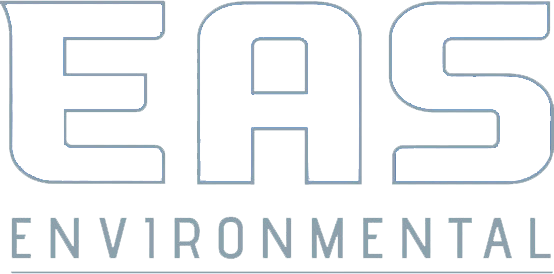Non-Friable Abatement in Charleston, SC
What is Non-Friable Asbestos?
Non-friable asbestos refers to asbestos-containing materials (ACMs) that are bound tightly in a solid matrix, making them less likely to release airborne fibers unless they are, drilled, sanded, or broken. While generally safer than friable asbestos, improper handling can still release hazardous fibers.
Is Non-Friable Asbestos Dangerous?
Although less likely to become airborne, non-friable asbestos can become friable over time due to wear, damage, or exposure to heat and moisture. When disturbed, it can still cause asbestos-related diseases such as:
- Mesothelioma – A rare and aggressive cancer of the lung and abdominal linings.
- Asbestosis – Scarring of lung tissue, causing chronic breathing problems.
- Lung Cancer – Non-friable asbestos exposure has been linked to a higher risk of lung cancer.
- Pleural Thickening – Hardening and scarring of the lung lining, leading to chest pain and breathlessness.
Where is Non-Friable Asbestos Found?
Non-friable asbestos is commonly found in older buildings and industrial settings, particularly in:
- Vinyl floor tiles and linoleum with associated mastics
- Asbestos cement sheets (transite siding panels, pipes, and roofing materials)
- Gaskets and brake pads
- Bituminous adhesives, mastics, and sealants
- Asbestos-reinforced plastics and composites
How is Non-Friable Asbestos Removed?
Although non-friable asbestos is more stable, removal must follow strict procedures to prevent fiber release, especially if the material is damaged or will be disturbed by renovation or demolition.
1. Site Inspection & Risk Assessment
A licensed asbestos inspector tests the material to confirm if it contains asbestos. If confirmed, an abatement contractor creates a removal plan that complies with EPA, OSHA, and local regulations.
2. Wetting & Encapsulation
- Encapsulation: A sealant is applied to bind the asbestos fibers in place and prevent them from becoming airborne.
- Wetting Method: Non-friable asbestos is sprayed with water mixed with a surfactant to minimize dust release.
3. Controlled Cutting & Handling
Unlike friable asbestos, non-friable materials may be cut, removed in sections, or carefully dismantled, provided they do not become friable in the process.
- Specialized low-speed saws and hand tools are used to prevent fiber release.
- HEPA-filtered vacuums are used to contain and clean up dust during removal.
4. Waste Containment & Transport
- Removed materials are wrapped in plastic sheeting, double-bagged, and labeled as asbestos waste.
- They are then transported to an EPA-approved asbestos disposal site.
5. Final Cleanup & Air Testing
- HEPA vacuums and wet-wiping methods are used to clean the area.
- Air quality tests ensure fiber levels are safe before reoccupying the site.
Can You Remove Non-Friable Asbestos Yourself?
Although considered less dangerous than friable asbestos, non-friable asbestos can still pose serious health risks if damaged, cut, or disturbed. It is bonded into solid materials like floor tiles, roofing, or siding, but when these materials break or deteriorate, they can release harmful fibers into the air. That’s why we strongly recommend consulting with a certified asbestos abatement professional before attempting any removal yourself. Proper handling and disposal require specialized training and equipment. For your safety and the safety of those around you, always rely on professionals to manage non-friable asbestos materials.
Is Non-Friable Asbestos Safe if Left Alone?
Yes, if it remains undisturbed and is in good condition. However, if non-friable asbestos materials become damaged or will be affected by renovations, they should be professionally removed or encapsulated.
Who to Contact for Non-Friable Asbestos Abatement?
If you suspect non-friable asbestos in your property, consult a licensed asbestos abatement contractor to assess risks and ensure safe handling and removal.
Got a Question? We’re Here to Help.
You can arrange an appointment or make an enquiry by phone or email, orget in touch to us via our contact form.
Frequently AskED Questions
Take a moment to read answers to our most frequently asked questions about our services.
Cities We Proudly Service
Click on the dropdown below to see all the cities we provide non-friable asbestos contracting services.
Contact EAS Environmental Today!
EAS Environmental will do everything we can to ensure your experience with us is excellent.
Request A FREE Estimate
Request a Free Estimate Form
24-Hour Emergency Service
Contact Information
Phone: 843-460-8391
Address: 125 Bud Lane Ladson Charleston, SC 29486
Email: sturner@easenvironmental.com
Business Hours:
24/7 Open
Appointments Available
Servicing North Charleston and all of South Carolina
EAS Environmental provides many services related to environmental hazardous abatement and cleanup as well as solving moisture control issues.
Related Services
Please see our most requested services listed below. EAS Environmental is here for you when you need asbestos or lead abatement, or moisture control service to prevent mold growth.
Asbestos Removal
With asbestos removal services, you'll never again have to worry about this hazardous substance that could wreak havoc on your health and wellbeing. Whether its in a private residence or commercial setting, we're a licensed and certified abatement firm that will remove asbestos from anywhere it may be found!
Demolition Services
It's hard to find a good demolition company, especially if you're in an emergency situation. We are the best demolition company around, and we can handle any job big or small. Our team of experts have years of experience under their belt so they'll be able to get your project done right the first time.
Disaster Restoration: Fire and Water Damage Restoration
When disaster strikes, fast action is critical. If your home or business has suffered fire or smoke damage, don’t wait—EAS Environmental is here to help. Our expert team provides responsive and prompt fire and damage restoration services to help you recover quickly and safely. Call us today to learn more about our fire damage repair services near you!
Schedule Your FREE Asbestos & Lead Evaluation!
Did you know that asbestos containing materials are still being sold in today? Call us today to find out more!


